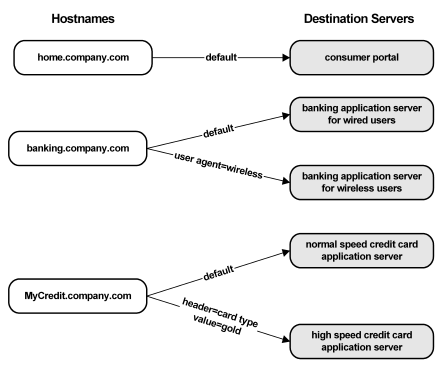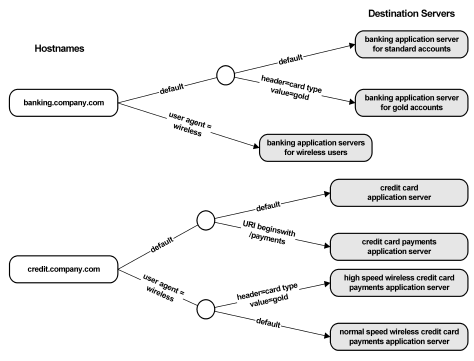Before you set up the proxyrules.xml file, you should map out the routing for incoming requests. Depending on the virtual host that contains the requested resource, the proxy rules can use a default destination; forward a request based on the user agent type, or uses a HTTP header value to determine the destination server that will fulfill the request. The SPS can provide access to a number of virtual hosts.
The following illustration shows how proxy rules can be used to route requests to appropriate destination servers.

Note: A proxy rules configuration file is processed from top to bottom by the SPS. The first condition that is met by an incoming request determines the behavior of the proxy engine. For example, if a set of proxy rules has two conditions based on a string contained in the URI of a request, and part of the URI of an incoming request matches both of the strings, the first condition listed in the proxy rules file will be used to route the request.
Proxy rules can also be used to control more complex conditions for directing requests to destination servers.
The following illustration shows how proxy rules can be used with a second level of conditions nested within parent conditions.

| Copyright © 2011 CA. All rights reserved. | Email CA Technologies about this topic |